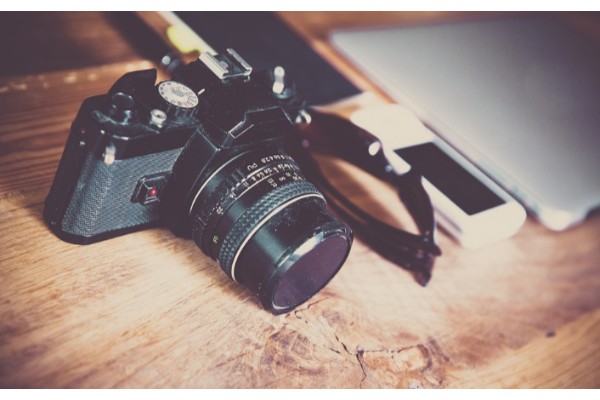What Is FOV-How Important the Field of View Is in Photography
Generally speaking, FOV, the field of view means:
- What is visible through a camera lens
- Measured horizontally, vertically, and diagonally
- FOV is determined by the camera lens and sensor size
In this article, we will discuss more details about the field of view.
Table of Contents
What is Field of View (FOV)?
Field of view is the extent of the observable world that is seen at a given time either through someone’s eyes, on a display screen, or through the viewfinder on a camera. The angle from which one can see that observable world is referred to as the field of view (FOV). Instead of a fixed focal point, it refers to the coverage of an entire area.
Humans have a typical field of vision that ranges from 170-180 degrees. Through optical or gaming devices, this is frequently difficult to accomplish. More of that observable world can be seen the wider the field of view.
In photography, changing the lens is all that is necessary to alter the field of view. A wide-angle lens, for example, might be used to capture more of a scene. Depending on what you want to accomplish, you can either move the camera or use a zoom lens to reduce the field of view. The wider the angle or field of view, the shorter the focal length of the lens. The result is that your field of view will either widen or narrow as you switch between lenses with different focal lengths.
Lens and Focal Length
The distance between the lens and the focused image on the sensor is known as a lens’ focal length.
An angular FOV (AFOV) with a fixed focal length lens is provided. The angle of light that the lens is capable of capturing is known as AFOV. The total FOV must be determined. A fixed focus lens, which can only be used at a fixed working distance, is not the same as a fixed focal length lens.
Even though the viewing angle is constant, the fixed focal length lens can be focused for various working distances to obtain variously sized FOVs. The AFOV and FOV are thus determined by the lens’s focal length.
Conversely, a longer focal length results in a narrower AFOV and a wider FOV for a given sensor size. In addition, compared to a lens with a longer focal length, a smaller working distance is required to achieve the same FOV. Short focal length lenses, on the other hand, are linked to greater distortion, which can affect the FOV and result in changes to the angle with respect to the working distance.
Furthermore, compared to longer focal length lenses, short focal length lenses typically do not offer a high level of performance. Additionally, shorter lenses might not be able to cover medium-large sensor sizes, which might restrict their usefulness.
With a fixed focal length lens, the FOV can be changed in three ways:
- changing the working distance from the lens to the object — this requires moving the lens farther away from the object plane;
- replacing the lens with a lens of a different focal length; or
- changing the sensor size.
A varifocal lens or zoom lens can also be used to alter the FOV because they both allow for changing the focal length and, consequently, the FOV. These lenses, however, are bulkier, more expensive, and perform worse than fixed focal length lenses.

Sensor
For a given working distance, a larger sensor produces a larger FOV. The FOV can be altered by adjusting the sensor size. The number of pixels and pixel size on the sensor determines the sensor size. While smaller sensors have a lower resolution and pixel size, they also have a lower depth of field (DOF), which is the sharpest point between an image’s closest and furthest points.
Field of View Calculation
The relationship among AFOV, focal length, and sensor size can be represented by the following equation:
AFOV = 2 x tan-1 (H/2f)
Here:
- H = sensor size (horizontal dimension)
- f = focal length of the lens
Also:
AFOV = 2 x tan-1 (FOV/2 x working distance)
FOV = 2 x working distance x tan (AFOV/2)
The FOV is affected by how much of the lens image is used, which can be changed by increasing or decreasing the sensor size.
The Human Eye and Field of View
The natural first point of perception for the FOV is the human eye. The FOV in human vision is made up of two monocular FOVs that the brain combines to create one binocular FOV.
The FOV of each individual eye is approximately 135 degrees horizontally and just over 180 degrees vertically. The binocular FOV is approximately 114 degrees after the monocular FOV is combined. The ability to perceive depth depends on this FOV.
The remaining 60 to 70 degrees are covered by peripheral vision. Only one eye can see those portions of the visual field in this version, so it is only monocular. All of these FOV measurements make the assumption that the subject’s eyes are firmly fixed on the visible world.
Humans have different FOVs for various colors in addition to differences in binocular and monocular vision. The image becomes more monochromatic on the edges or periphery of a person’s field of view because color saturation and perception are concentrated in the center of the FOV.
The Importance of Field of View
The fundamental principle of optics, or FOV, is crucial. Understanding FOV is important for anyone who works with optics. This includes the following:
- photographers
- video game designers
- filmmakers
- virtual reality (VR) professionals
With regard to VR applications, FOV is crucial. A small focal length is provided by heavy, bulky VR glasses, which widens the field of view and creates a more immersive user experience (UX). However, color distortions and chromatic aberrations are also brought on by heavier apparatus and larger lenses, so lighter headsets are necessary to avoid these problems. Finding this balance can be challenging. Though VR technology is developing, we might see lighter gear, a larger field of view, and lenses in the future to deliver an improved user experience.
In computer games, FOV is also a significant factor. Since games without this feature are not as realistic or immersive as players would like, they are preferred by players. Even motion sickness may be induced by a low FOV.
In drone photography, FOV calculations are important. With a wider FOV, drone photos can better capture broad swaths of a landscape. In order to better control the drone, increased visibility can also make it simpler to see obstacles from a first-person perspective.
Field of View in Photography and Filmmaking

The FOV is the term used to describe what can be seen through a camera lens or optical viewfinder in photography and filmmaking. The FOV is altered by changing the lens. A wide-angle lens, which has a wider field of view than human vision, is used to increase FOV and capture more of a scene. A zoom lens can be used in a similar way to reduce the FOV. In general, a shorter focal length lens broadens both the angle and the field of view. As a result, the FOV can be altered by switching between lenses with various focal lengths.
A wider FOV enhances the realism of the experience. However, the angle is always smaller than the field of vision that the human eye is capable of, regardless of the lens that is being used. In other words, camera lenses are unable to provide the same level of immersive viewing that is possible with human vision.
Differences Between Field of View and Depth of Field
The DOF controls how sharp or blurry the background is after a subject has been focused on by a camera lens. Only a small portion of the scene is in focus when the DOF is shallow. However, a wider area is in focus when the DOF is deep.
The subject is in focus while the background is blurry because of the small focus area and shallow DOF. Portrait photos must follow this pattern. Everything in the image, including the background, stays sharp and clear when a larger area is in focus with a deeper DOF. This setting is perfect for landscape photography.
The DOF can be adjusted with the camera aperture or by changing the following:
- distance between the camera and the subject;
- lens focal length; and
- size of the camera’s sensor.
The primary distinction between FOV and DOF is that the latter term refers to the subject’s sharpened background and foreground. The field of view (FOV) is the region that is always visible through a lens or viewfinder. It establishes the size of the imagined area. Thus, FOV is about the image.





0